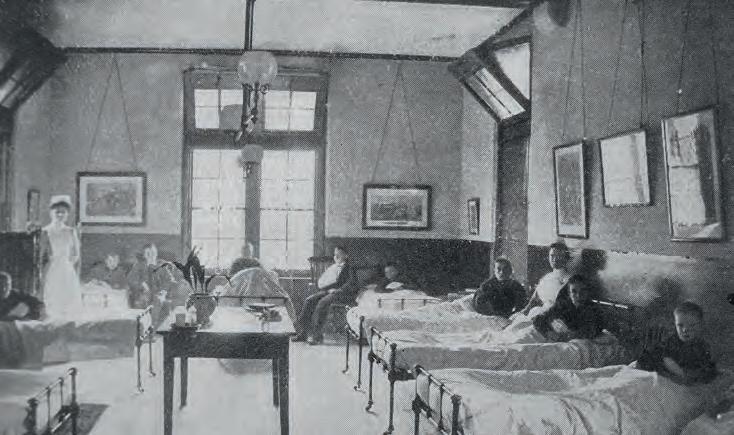
12 minute read
Feature: Epidemics at the School
EPIDEMICS AT THE SCHOOL
Using his extensive knowledge of our rich history, OR Committee member, Andy Wotton (Mullens 1975), has compiled this fascinating account of past medical professionals who served the School.
Advertisement
The COVID-19 pandemic could be seen as the worst outbreak of disease
in its history. Apart from a very tiny minority of the world’s population, no living being has experienced anything like the Coronavirus which spread so rapidly to every corner of the globe from Wuhan in China. The disruption to the lives of the School and the wider Reed’s community has been immense. Throughout this year’s magazine, there are many references to the heroic efforts of all those in the NHS, as well as countless hundreds of thousands in other ‘key-worker’ roles, so it seems appropriate for the Reed’s Heritage archive piece this year to shine a light on those who have been responsible for maintaining the health of the pupils over the generations.
Hackney 1865 – Typhoid
The first great outbreak of illness, and the deadliest, in the School’s history occurred between November and December 1865 (often mistakenly recorded as 1866), when 214 children out of a total of 461 contracted Typhoid. The School’s Annual Report of that year confirmed that fifteen children died during the outbreak. The first pupil was Alexander Pardon on the 21st November, aged 11. Such was the random nature of the outbreak his younger sister, Mary Ann Pardon, survived. The youngest to die was George Frankland Dady who was just 9 years of age when he passed away on the 10th December. The oldest and last pupil was 14-year-old Frances Armour on the 2nd January 1866.
The number of cases came thick and fast. Between the 5th and 11th November, there were 40. The following week the number rose by 76 and, one week later, 83 new cases were recorded. The worst single day was the 16th November, when 21 new cases were diagnosed. Throughout the crisis, as with year’s pandemic, those responsible for the medical provision and supervision of the sick were heroic in their efforts to tend the children. The two men in charge were Dr Dennis de Berdt Hovell, aged 48 at the time of the outbreak, and his junior partner, Dr Charles Dudley Kingsfold who was 35. Their efforts, however, would have been far less effective were it not for the dedication of the nurses, both professional and auxiliary. The Head Nurse was Margaret Neale, who was born and raised in Hackney. Writing in 1890, a former pupil, Charles Pipe, who nearly died, but recovered after six weeks, remembered Margaret’s care and kindness.
“Miss Neale was one of the kindest souls that ever breathed, and I think that was the reason we preferred being in the Infirmary to over the way. Never shall I forget her extreme kindness to me, of which it has been my pleasure of late years to thank her personally and very slightly repay her.” Another nurse, this time singled out in an article for the medical journal, The Lancet, was Mrs Anne Boor, in which it said, “She displays, in regard to the case of each sick child, a knowledge and an interest almost parental.”
Others mentioned for their sterling efforts, although sadly we have no knowledge of them, were a Miss Johnson, a Miss Denner and someone called Caroline Cowen.
As a direct result of the outbreak, the Governors took the decision to move the School out of the sprawling metropolis of Victorian London to pastures new. The place they chose was a 36-acre site adjacent to Watford Railway Junction, which opened to much fanfare on the 20th July 1871. Nurse Margaret Neale decided not to move to Watford and remained in Hackney for the remainder of her life, as did Anne Boor, along with her husband Edward, who was an Accountant at the School.
The Infirmary 1910s
Dr Alfred Thomas Brett
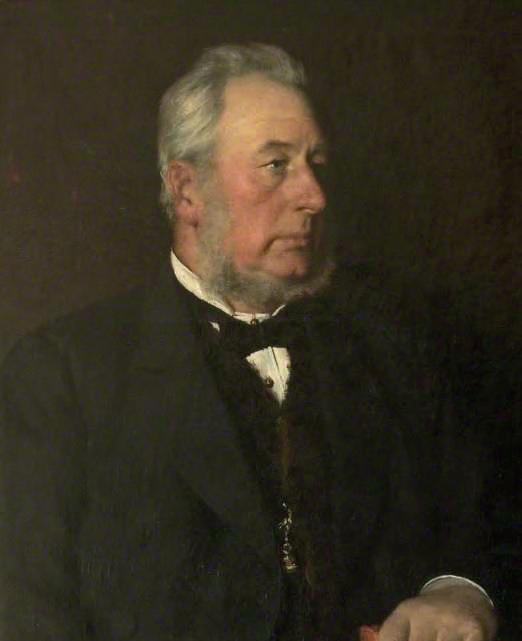
Watford 1871
With the move to Watford, the School needed to establish a relationship with a new doctor. That doctor was Alfred Thomas Brett and, for the next twenty-five years, he served both the Boys’ and the Girls’ Schools as its Chief Medical Officer from 1871 until 1890 and then as its Consulting Surgeon until his death in 1896. There was one other early and important action the Governors decided to take. Today, Vicarage Road, Watford, is known by many as the home of the town’s football club. Long before Watford Football Club built its stadium in 1922, there was a cemetery opposite the ground; sometime around 1873, a plot of land was consecrated for the burial of those pupils whose family or guardians were not able to make provision for their deceased child’s burial. Although medical science made great strides forward in the 19th century, the death rate amongst infants and school-aged children was still high. By the 1890s, it was on average 150 in every 1,000 children. The first burial in the Watford plot was on the 29th August 1874 when eight-year-old William Samuel Pitman was laid to rest. He had only been admitted to the School in June. Over the next 47 years a further 20 pupils were buried in the plot, the last one being Ernest Morris Downs on the 18th April 1921. A year later the cemetery closed to further burials and a new one opened in North Watford. There are no records of any School-related burials at the new site. In the autumn of 1886, Enteric (otherwise referred to as Typhoid) Fever returned to the School. Although the impact was less severe than in 1865, it still claimed the lives of six children, four of whom were buried at Vicarage Road between the 22nd and 31st December. In total, Doctor Brett reported to the Board that 51 children were infected.
Shortly after the outbreak of Enteric Fever, Doctor Brett was joined by Doctor Frederick Haycraft Berry as Medical Officer for the School. Berry had qualified at Guy’s Hospital and after serving as HousePhysician and Obstetrician there, he went into practice in Watford in 1883. In time, he became not only the Chief Medical Officer to the School (when Doctor Brett died), but he also served the Post Office and the London and North West Railway Company. Following Brett’s death, Berry was joined in 1897 by another doctor from Guy’s, Edward Francis Herman Hardenberg. Originally from the Netherlands, Doctor Hardenberg became a British Citizen the same year he joined Doctor Berry and, for the next 15, he developed a very close bond and working relationship with the School.
Dr Hardenberg not only helped attend to the medical needs of both the Boys’ and the Girls’ Schools but was a frequent supporter and benefactor of the children, a point well made in the Girls’ Magazine in 1914, when news of a serious illness reached the School.
The Infirmary Watford 1910
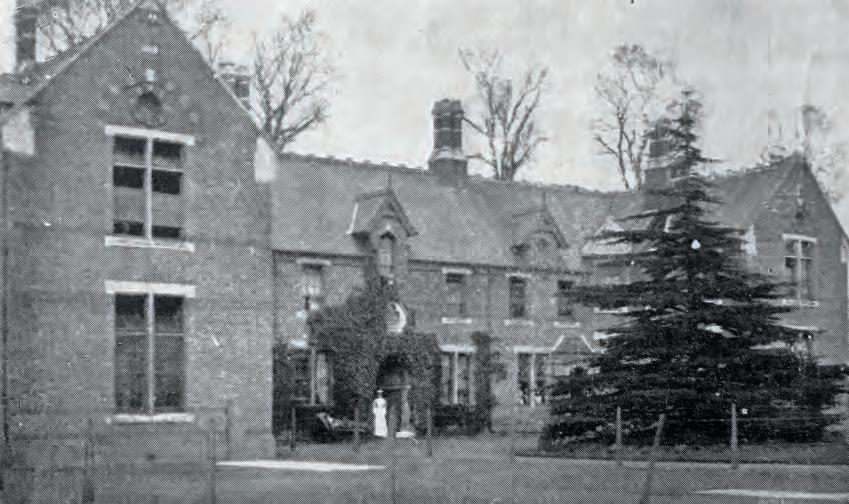
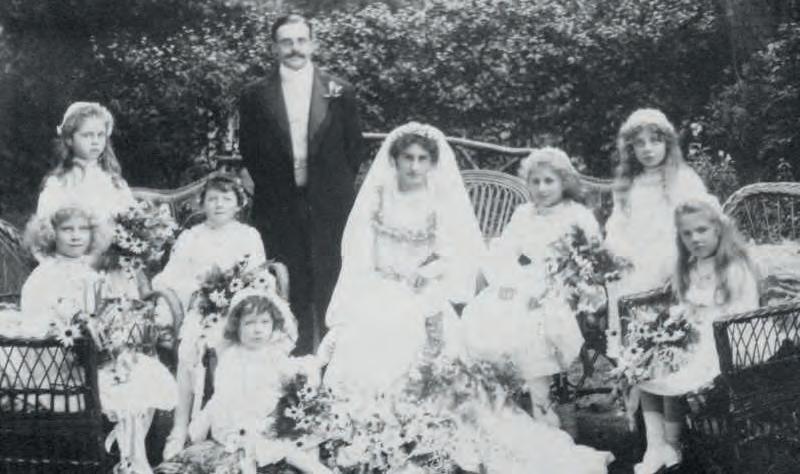
Dr Edward Hardenberg 24th Sept. 1903
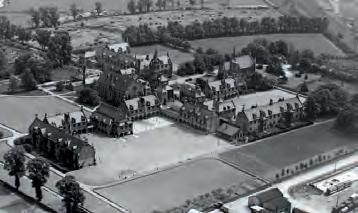
Infirmary 1930s set back to the left of main buildings
“It is with the deepest regret that we record the very serious illness of Dr Hardenberg. Since last November he has been very ill, and his condition now is causing the gravest anxiety. During the 15 years Dr Hardenberg has been our School Doctor, he has taken a great interest in our school life, and we all feel what a real friend he is. He has always helped and encouraged us in our games; indeed, it was mainly through him we started Hockey; he helped to coach our First X1 and has often umpired for our matches. We have thought with great sympathy about him during this long illness, and earnestly trust that the means used to alleviate his pain may be blessed.”
The ‘very serious illness’ was cancer which claimed his life on the 22nd March 1915. The British Medical Journal published an obituary in which it said his illness had begun in November 1913 and, whilst fully aware of his condition, he faced his fate “with exemplary fortitude.” The obituary concluded: “Probably the highest tribute to his memory is the work he did, as medical officer, for the children of the London Orphan Asylum. He gave unstintingly of his best for their welfare, a service warmly appreciated by the Governors and staff of that institution; the children were devoted to him. Short though his career was, Dr Hardenberg left behind him a memory which his colleagues will cherish, and a reputation of honour to his profession.”
Spanish Flu
The war eventually came to an end, but not before the world was engulfed in the largest pandemic since the Black Death, the Spanish Flu. There is still some debate about where the outbreak first occurred, but it wasn’t Spain. During the War, Spain was a neutral country and therefore any news from there was not subject to any form of media censorship. This meant that, whilst the flu was present in most of the watring countries, it could not be reported on. Those restrictions did not apply to Spain, so the newspapers reported on its deadly spread there and it became known as the Spanish Flu. The estimated statistical impact of the flu varies immensely, but most analysists seem to agree that a third of the world’s population was infected, and between 20 and 50 million died by the end of the outbreak. At Watford, the School was greatly affected by the flu, but no pupils or staff died, a remarkable fact in itself.
Following Hardenberg’s death, Dr Berry was joined by Vincent Glendinning, a doctor originally from Canterbury in New Zealand. He arrived in England in 1904 and, after qualifying, entered into Dr Berry’s practice. The bond between the two men was strong and was further strengthened when Glendinning married Berry’s daughter, Frida. Dr Berry died in 1922 and, for the next decade or more, well into the late 1930s, Glendinning was the School’s principal Medical Officer. Very little is known about Glendinning, but one former pupil writing about his time at the School described him as ‘gruff, but kind’. Another recalled a time of some amusement when the good doctor stood too close to an open fire and singed his trousers! Glendinning was joined by Doctor Charles Herbert Hall. Not much is known about Doctor Hall either. He was born in Manchester and, with his wife Nellie, he moved to Watford in 1893 where they started a family. He and Dr Glendinning appear to have been the School’s medical practitioners through the 1930s and probably up until the outbreak of World War Two in 1939, when the Schools were evacuated. Certainly, by 1939, Hall had retired but remained in Watford where he ended his days in 1952, aged 84. Glendinning’s association with the School also ended with the outbreak of the war, but he was still practising in 1939, being 20-years younger than Hall.
After the war, the two Schools were split geographically, never to be co-located again. The Girls’ School at Dogmersfield had Dr Ronald Harward as its Medical Officer, a position he held until the School’s closure in 1955. At Cobham, the first Medical Officer for the Boys’ School was Dr John Hale. His practice, since 1920, had been in Hogshill Lane, Cobham, but before that he had been in Watford where, in 1923, he married his wife Elsie Coles. It seems highly likely, therefore, that Dr Hale knew of Reed’s School (the London Orphan School when he knew it initially) and that his appointment may have been as a result of that knowledge.
The records are a little unclear how long Hale remained as the Chief Medical Officer, but it seems that Dr John Lytle may have taken over from him in 1949, a position he held until the mid-1980s. What is much clearer, however, was the significant change in the overall provision of medical care and the fact that deaths from disease/ illness were all but eradicated. Doctors Glendinning and Hall reported to the Board that there had been one death in 1936, but there are no records of any more at the School after that date.
There have, of course, been many outbreaks of illness going back as far as you care to go but, over the past sixty years, it has mainly been influenza that has laid the School low; 1958, 1960, 1974 and 1978 to highlight just a few. The one in 1978 has had a lasting legacy to this day. Matters were so difficult with pupils and staff succumbing to the illness that the Headmaster’s wife, Phoebe Tyson, put out
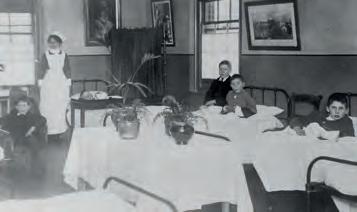
Boys’ Infirmary circa 1930
Sick Bay 1970
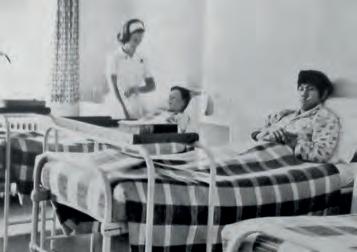
Girls’ Infirmary circa 1930
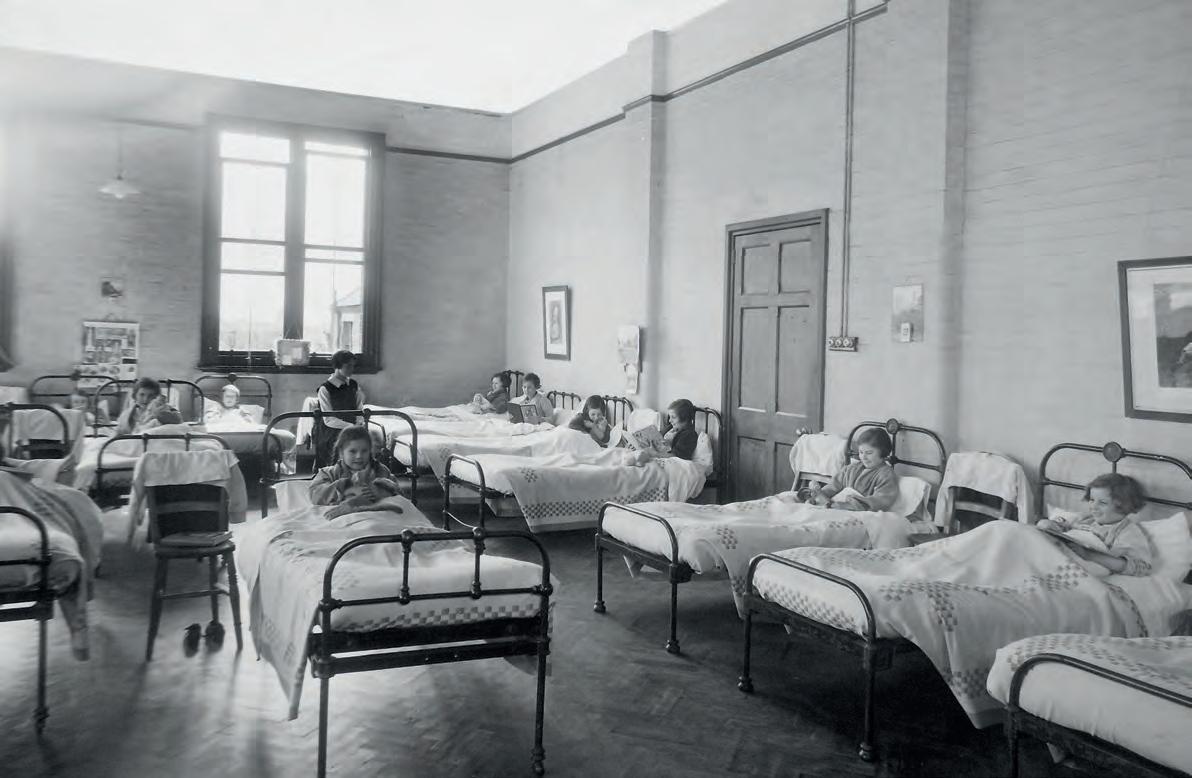
an SOS to the local community to come into the School to lend a hand. Many responded to the call and, as a direct result of their help and compassion, the Friends of Reed’s School (FORS) was formed. Initially as an auxiliary support to the hard-pressed medical team, FORS next turned their attention to raising much appreciated funds to support the School’s activities which continues to this day.
This article began by highlighting the medical care provided by Margaret Neale back in 1865, at a time of great pressure and strain on the School’s resources during the outbreak of Typhoid that year. It seems appropriate, therefore, to end by saluting those nurses and medical staff who have watched over the Reed’s pupils over many years and continue to do so today. Over the years titles may have changed - Sister, Infirmary Nurse, Medical Centre Sister, and more besides – but the degree of care, compassion and professionalism has been of a high standard throughout.
Sister Elspeth Storrar, universally known as “Sis” cared for her charges between 1913 and 1936. She was much loved and many former pupils would seek her out to talk over past times on their returns to the School. There have been other nurses such as Margaret Vaisey, between 1922 and 1932, before she switched to become a House Matron until her retirement in 1954. In the late 1950s there was Mary Cuthbert whose place was taken in 1960 by Sister Norma Kiehne from Wondai in Queensland. She was the Sister until 1995, the longest serving in the School’s history. Sister Deirdre Boylan worked alongside Sister Kiehne, before taking over from her, and eventually retiring in 2001.
Today the Manager of The Health Centre is Kate Dunn, supported by nurses Anna Stringer, Ann West, Suzanne Druce and, until very recently, Adele Smyth. They are ably supported by various experts in their fields, such as Dr Richard Draper, OR Andy Shiells (Bristowe 1984), Donna Morgan and others.
Having shone this light on the School’s medical staff, it is clear that some past Head Teachers, Editors of the School magazines and the reminiscences of former pupils have occasionally mentioned their work and, when they have done so, it has always been with gratitude and warmth.
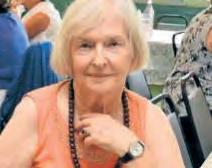
Norma Kiehne
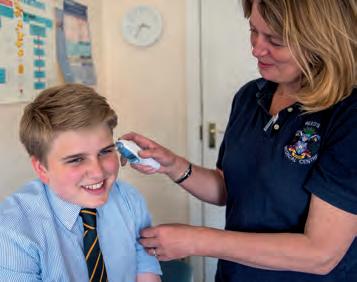
The Medical Centre today










